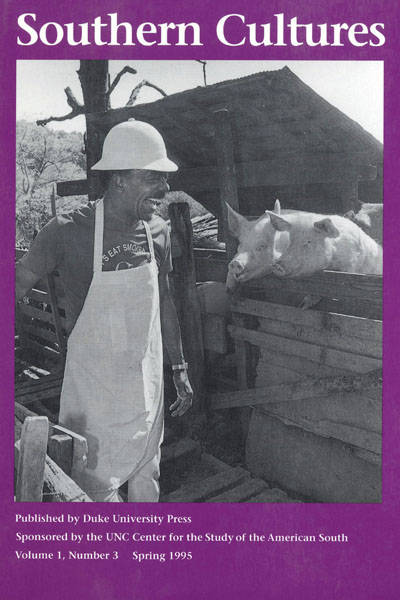“Both symbolically and in reality the hog has become ingrained in the culture of the South.”
The “King of the Road,” Roger Miller, had a genuine understanding of the southern fondness for hogs. “In the scheme of things, in the way things go,” wrote Miller, “you might get bit by the old Fido, but not that gentle porker friend. . . .”2 For almost two centuries, the southerner’s best friend (the hog) has endured as the ideal symbol of the region. In the Old South the swine served as the backbone of the southern farm and played a central role in the region’s economy and culture. As the South changed from a rural-agricultural to an urban-industrial society, southerners relied on the hog in new ways: grocery stores met the demand for hog meat, agricultural fairs replaced the ritual hog killings, and barbecue restaurants perpetuated the region’s dietary tradition of consuming pork.


